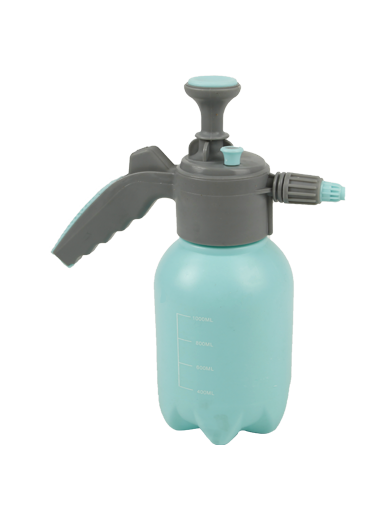It Is A Professional Sprayer Manufacturer Integrating Research, Design And Development.
+86-15824002009 Contact UsGarden trigger sprayers are essential tools for maintaining healthy plants, cleaning outdoor surfaces, and applying fertilizers or pesticides. Their efficiency, ease of use, and versatility make them popular among gardeners, homeowners, and professionals. Choosing the right trigger sprayer requires understanding the available types, their specific features, and the tasks they are suited for.

Types of Garden Trigger Sprayers
Trigger sprayers can be classified based on design, capacity, and functionality. Each type serves different gardening and household purposes.
Standard hand-held sprayers: These are the common and widely used sprayers. They typically feature a hand-operated trigger and a nozzle that allows for adjustable spray patterns, ranging from a fine mist to a direct stream. Standard sprayers are suitable for watering plants, applying liquid fertilizers, or light cleaning tasks.
Pump-action sprayers: Pump-action sprayers include a pressurized reservoir that releases liquid when the trigger is pulled. This type generates a stronger spray compared to standard hand-held sprayers, making it suitable for applying pesticides, herbicides, or cleaning solutions on larger surfaces. Pump-action sprayers may include an adjustable nozzle for controlling the spray pattern.
Battery-operated or electric sprayers: These sprayers use a rechargeable battery or power source to generate a consistent spray without manual pumping. They are ideal for larger gardens or for gardeners who need to cover significant areas without fatigue. Many models allow for adjustable pressure and misting settings, improving coverage efficiency.
Foam or trigger foamers: Some sprayers are designed to produce foam rather than a liquid stream. Foam sprayers are particularly useful for cleaning applications or applying chemicals to plants where adherence is important. The foam sticks to surfaces longer than a standard liquid spray, providing more effective coverage.
Backpack or handheld large-capacity sprayers: For extensive gardens or commercial use, backpack sprayers offer a higher volume capacity, reducing the need for frequent refills. These sprayers may be manual, pump-action, or battery-operated, providing versatility for different spraying tasks.
Understanding these types helps gardeners match the sprayer to their specific needs, ensuring efficient and convenient application.
Features and Advantages
The effectiveness of a garden trigger sprayer depends not only on its type but also on its features. Key considerations include nozzle adjustability, reservoir size, and material quality.
Adjustable nozzle: A nozzle that can switch between fine mist and strong stream allows precise application of water or chemicals, preventing overwatering or chemical waste.
Ergonomic trigger design: Comfortable trigger handles reduce hand fatigue, particularly during prolonged use. Some sprayers feature extended triggers or lever designs to make operation easier.
Durable construction: High-quality plastics or corrosion-resistant metals ensure longevity, especially when used with fertilizers, pesticides, or cleaning solutions. Transparent or semi-transparent reservoirs help monitor fluid levels.
Pressure control: Pump-action and battery-operated sprayers often include pressure regulation to provide a steady spray. Consistent pressure ensures uniform coverage and prevents leakage or uneven application.
Ease of cleaning: Removable nozzles and wide-mouth reservoirs make cleaning easier, preventing clogging and prolonging the sprayer’s life.
These features enhance usability, efficiency, and maintenance, making the sprayer more reliable for both indoor and outdoor tasks.
How to Choose the Right Garden Trigger Sprayer
Selecting a sprayer requires assessing the type of tasks, garden size, and personal preferences.
Task requirements: For small plants or indoor use, a standard hand-held sprayer with adjustable misting is sufficient. Larger gardens or frequent chemical applications may benefit from pump-action or battery-operated models.
Garden size: Small patios or balconies work well with compact sprayers, while extensive gardens may require higher capacity or backpack sprayers to reduce refill frequency.
User comfort: Consider ergonomic features, trigger resistance, and weight, especially for extended use. Battery-operated sprayers can reduce manual effort, which is helpful for larger projects.
Maintenance and durability: Choose sprayers made from corrosion-resistant materials and easy-to-clean designs to ensure longevity. Transparent reservoirs and replaceable nozzles simplify maintenance.
We will provide you with the latest product
information as soon as possible
